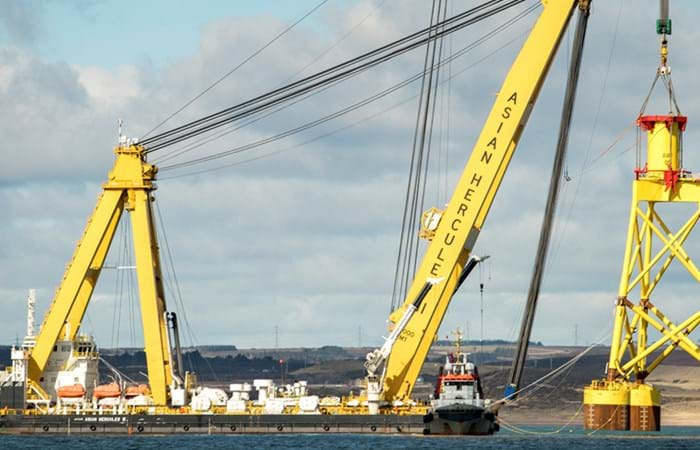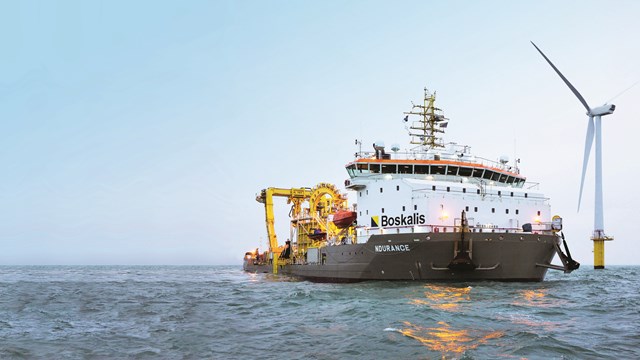Boskalis was responsible for the eleven suction bucket jacket foundations, scour protection, 66 kV inter array and export cables and the installation of the wind turbine generators.
The Aberdeen Offshore Wind Farm is also known as the European Offshore Wind Deployment Centre. The Windfarm is located approximately 3 kilometers off the coast of Aberdeen, United Kingdom. With its eleven wind turbines it has a total capacity of 93.2 MW (2 * 8.8 + 9 * 8.4 MW). The wind farm features the world’s most powerful wind turbine at date, exporting power through 66 kV cables and supported on suction bucket jackets. This novel foundation type constitutes one of the major innovations of the Aberdeen Offshore Wind Farm project, which is being used here on a large scale for the first time. In essence, a suction bucket jacket is a steel structure welded to three large, inverted steel buckets which are lowered onto the seabed. The water is pumped out of the steel buckets, creating negative pressure driving the buckets to the desired penetration into the seabed.




